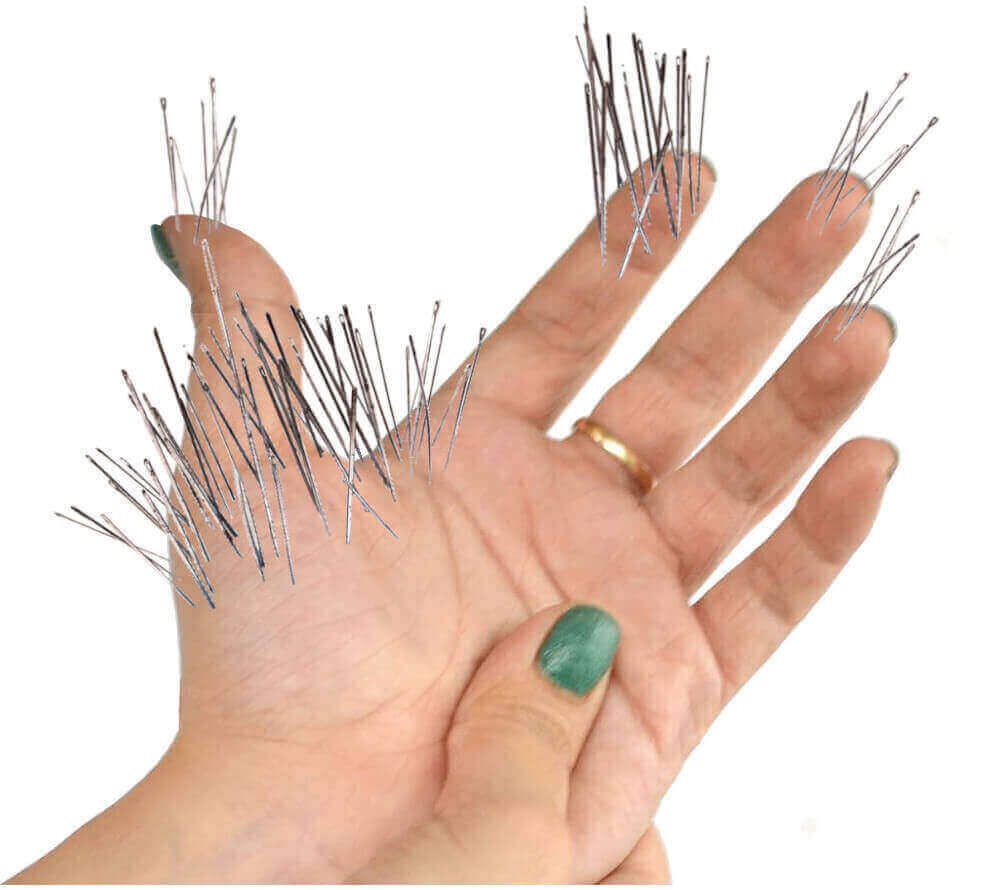All About Carpal Tunnel in Women
From Dr. Z - Carpal tunnel syndrome specialist
Key Point: There's More Carpal Tunnel in Women than Men
Most doctors diagnose carpal tunnel in women more frequently than in men. We know from different health databases that women are about 70% more likely to get carpal tunnel syndrome. That means women are 2.3 times more at risk.
In fact,
doctors have known about this figure for decades. Just ask any general practitioner and they'll confirm that the majority of their carpal tunnel patients are women. So what's going on?
- FIND OUT: do you have carpal tunnel?
No strings attached self-test.
About carpal tunnel syndrome
Carpal tunnel syndrome usually starts slowly. Patients generally begin noticing symptoms as their fingers or hands hurt while they're just sitting around at rest.
Fingers also might go numb when held at certain angles, like when talking on a phone or while driving. Usually pain, numbness or severe tingling (also called pins & needles) wakes them up at night as the condition advances.
Everything we know about carpal tunnel syndrome says these are the hallmark warning signs. So don't ignore them!
Today carpal tunnel syndrome is the most frequently diagnosed musculoskeletal disorder in the USA. It also is the reason for most of the surgeries performed, second only to back surgery.
Comparing carpal tunnel in women & men
We already know that carpal tunnel in women is a big problem. But today carpal tunnel syndrome is not classified a “disorder in women”. Why? Because a good proportion of men get it, too.
But when we adjust the statistics by the types of work women and men traditionally do, the numbers put women at much higher risk.
We’ve known for years that forceful and rapid hand movements will bring on carpal tunnel syndrome. For example, jobs requiring lifting, pushing, laboring with your hands, and using machine tools infamously contribute to getting carpal tunnel.
These jobs are also traditionally male-oriented. In fact, the Bureau of Labor Statistics (in 2017) says that men occupy 92% of these manual jobs. So it’s no wonder why a lot of men get carpal tunnel.
Yet the clinical numbers show 70% of carpal tunnel diagnoses are in women. So just imagine how that would change if women predominantly worked those heavy manual jobs!
- The point here is that women tend to NOT work the heavier, hand-stressing occupations.
- The statistic for the incidence of carpal tunnel syndrome in women does not account for this fact.
- Therefore, that statistic for incidence must be adjusted.
Here's the new statistic...
Adjusting and recalculating the statistics for the incidence of carpal tunnel in women shows an alarming number. Under everyday living conditions (i.e., without a hand stressing job):
Women are 26 times more likely to develop carpal tunnel syndrome than men. That's 97% more!
Therefore, that original and misguided statistic for women having 2.3 times (70%) higher incidence is just plain wrong. It's time we adjust the statistics to reflect the real world.
This disproportionately high incidence of carpal tunnel in women CLEARLY makes it primarily a “disorder in women”.
A wake-up call
As a result of this perspective, we must change our view of carpal tunnel syndrome in women. It's my belief that healthcare education and training should incorporate this issue in all women’s health programs.
And carpal tunnel prevention should be a part these programs. Simply ignoring the problem and assuming surgery will take care of it is completely irresponsible.
If left unaddressed, the problem of the higher incidence of carpal tunnel in women will not just go away. There are two reasons for this.
• First, not correcting the actual incidence is due to plain ignorance. Typically, doctors and policymakers do not understand the simple statistics and facts outlined above.
• Second, there's financial incentive for
not correcting the problem. As a medical disorder, carpal tunnel syndrome generates
huge income in the field of medicine.
In fact, the costs are enormous. The sequence of this disorder goes from diagnosis, to non-surgical therapies, to surgery, and finally through rehabilitation.
Combined, this sequence costs an average of $17,400 per person. And that’s when things go right!
Any complication of surgery can easily double that number.
- In conclusion, I call for doctors, federal policy makers & the insurance industry to take responsibility.
- It begins with changing a mindset: the high incidence of carpal tunnel in women makes it a "women's issue".
- Better appreciating this condition will help us more effectively serve those who suffer the most.
Summary
Federal policy makers, insurers, and the healthcare industry need to wake up. Carpal tunnel in women is not an anomaly but by definition a true women's disorder.
Therefore, we must put carpal tunnel syndrome where it belongs; in women’s health issues. Then we can tackle the problem from the standpoint of a carpal tunnel prevention program. This will be the first step toward keeping carpal tunnel syndrome from becoming an epidemic.





